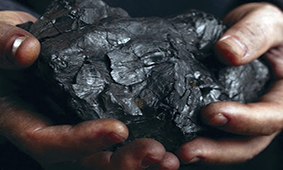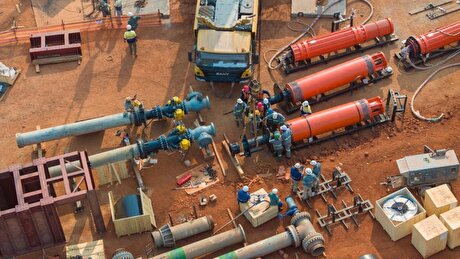
India lockdown extension pressures coal import outlook

India has lengthened the lockdown again, by two weeks from today, a second extension since the curbs started on 25 March.
The extension was expected and may already have been factored into mostly weakened imported coal prices. But this time around at least 130 areas have been designated as red zones — including major urban areas such as Mumbai and Delhi — because they have a high incidence of Covid-19 cases. While the lockdown will still be tightly enforced in the red zones, there will be some relaxation in other zones with fewer or no cases, to prop up economic growth.
But this might not be enough to jump start industrial activity, which remains subdued with industries grappling to stay afloat amid a tacit government nudge to not cut jobs or freeze employee salaries. Operations at ports and key industries such as steel, power and coal remain disrupted because of force majeure declarations and transport difficulties, despite being classified as essential services.
The demarcation of zones — as part of the latest easing measures — could give local administrations more clarity in granting approval for resuming some industrial and construction activities, a market participant said.
But thousands of labourers have returned to their homes and the government is arranging transport for the stranded ones, something that will weigh on any meaningful revival in economic activity across sectors. Some market participants believe that even after lockdowns are over, it could take at least 5-6 months for demand to recover to where it was at the start of 2020, and a meaningful pick-up in coal and petroleum coke prices could take even longer.
"The situation is still very grim and fluid," according to Sponge Iron Manufacturers Association (SIMA) president Rahul Mittal. The association expects the authorities to cut lending rates and some regulatory levies, and is calling for a gradual restart of government-backed infrastructure projects. Several industry bodies have asked the central bank and government to provide stimulus packages for certain industries, including sponge iron makers.
A revival of activity in the local sponge iron industry should support the South African coal market, as the bulk of this industry's imported coal is shipped from Richards Bay. But the build-up of imported coal stocks — from Richards Bay and other origins — at Indian ports would weigh on fresh orders from South Africa even if sponge iron production rises in coming months. For example, the key east coast port of Krishnapatnam has 900,000t of South African coal right now, while usual monthly offtake of South African coal from Krishnapatnam is 300,000t, he said. Gangavaram, also on the east coast, also has high coal stocks at the port.
Slow recovery
The cement industry, a key consumer of coal and petroleum coke, is also concerned about the prospects of demand recovery. "We have resumed partial operations at several of our units, but inventories are still high despite an uptick in dispatches last week," an executive at an Indian cement firm said.
There has been "a small recovery" in cement dispatches after construction activities were allowed to resume last month, he said. The further easing of lockdown conditions could steadily propel cement consumption, but it is too early to talk about the road ahead, the executive said.
Adequate petroleum coke stocks at cement factories are putting pressure on prices. India's petroleum coke consumption declined by more than 22pc in March from a year earlier to 1.68mn t after the lockdown hit demand.
Meanwhile, industry body the Coal Consumers' Association of India expects industrial activity and coal consumption to be slow in the April-June quarter. National coal-fired generation remains weak after initial March data showed a drop of about 11TWh from a year earlier to 77.19TWh.
Indian thermal coal imports in March slipped by 1.3mn t on the year to 14.72mn t following a steady rise in the previous few months, data from shipbroker Interocean show.
By Saurabh Chaturvedi


Trump weighs using $2 billion in CHIPS Act funding for critical minerals

Codelco cuts 2025 copper forecast after El Teniente mine collapse

Electra converts debt, launches $30M raise to jumpstart stalled cobalt refinery

Abcourt readies Sleeping Giant mill to pour first gold since 2014

Barrick’s Reko Diq in line for $410M ADB backing

Nevada army depot to serve as base for first US strategic minerals stockpile

Tailings could meet much of US critical mineral demand – study

Viridis unveils 200Mt initial reserve for Brazil rare earth project

SQM boosts lithium supply plans as prices flick higher

Energy Fuels soars on Vulcan Elements partnership

Northern Dynasty sticks to proposal in battle to lift Pebble mine veto

Giustra-backed mining firm teams up with informal miners in Colombia

Critical Metals signs agreement to supply rare earth to US government-funded facility

China extends rare earth controls to imported material

Galan Lithium proceeds with $13M financing for Argentina project

Silver price touches $39 as market weighs rate cut outlook

First Quantum drops plan to sell stakes in Zambia copper mines

Ivanhoe advances Kamoa dewatering plan, plans forecasts

Texas factory gives Chinese copper firm an edge in tariff war

Energy Fuels soars on Vulcan Elements partnership

Northern Dynasty sticks to proposal in battle to lift Pebble mine veto

Giustra-backed mining firm teams up with informal miners in Colombia

Critical Metals signs agreement to supply rare earth to US government-funded facility

China extends rare earth controls to imported material

Galan Lithium proceeds with $13M financing for Argentina project

Silver price touches $39 as market weighs rate cut outlook

First Quantum drops plan to sell stakes in Zambia copper mines

Ivanhoe advances Kamoa dewatering plan, plans forecasts

















